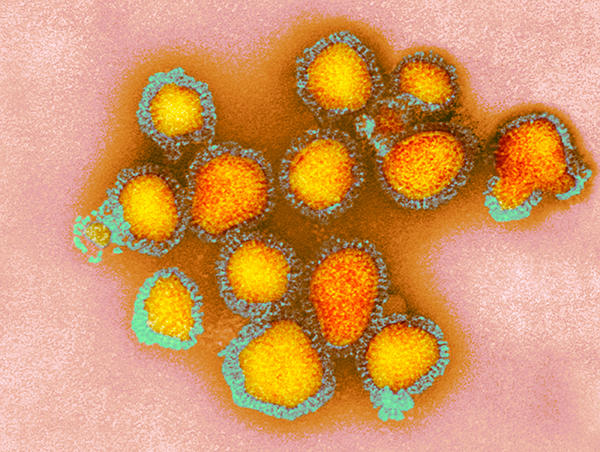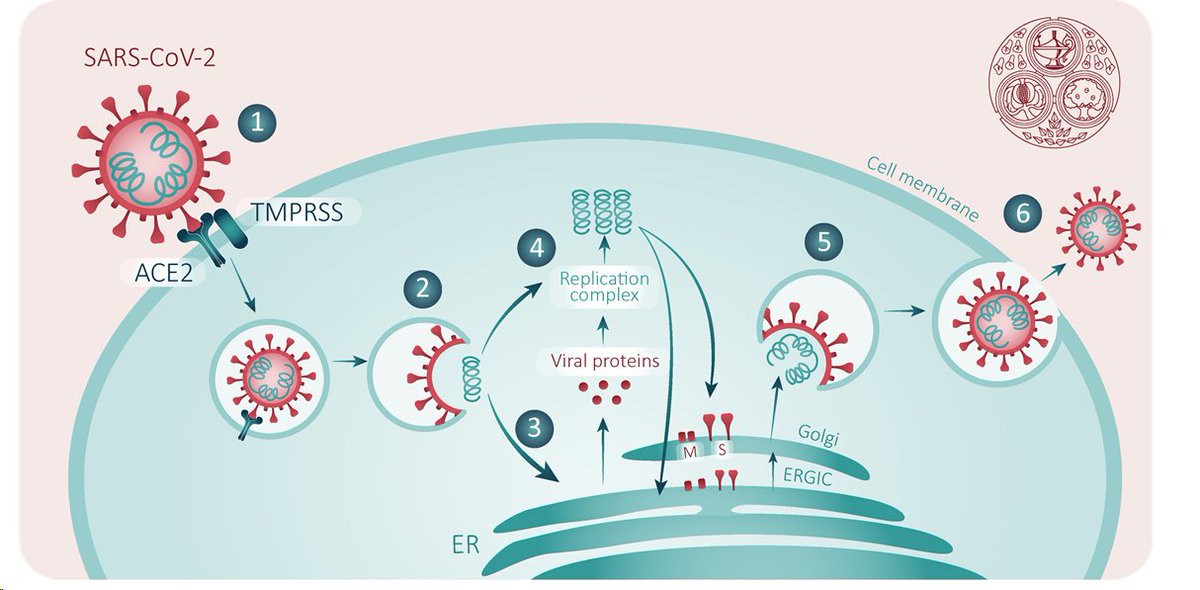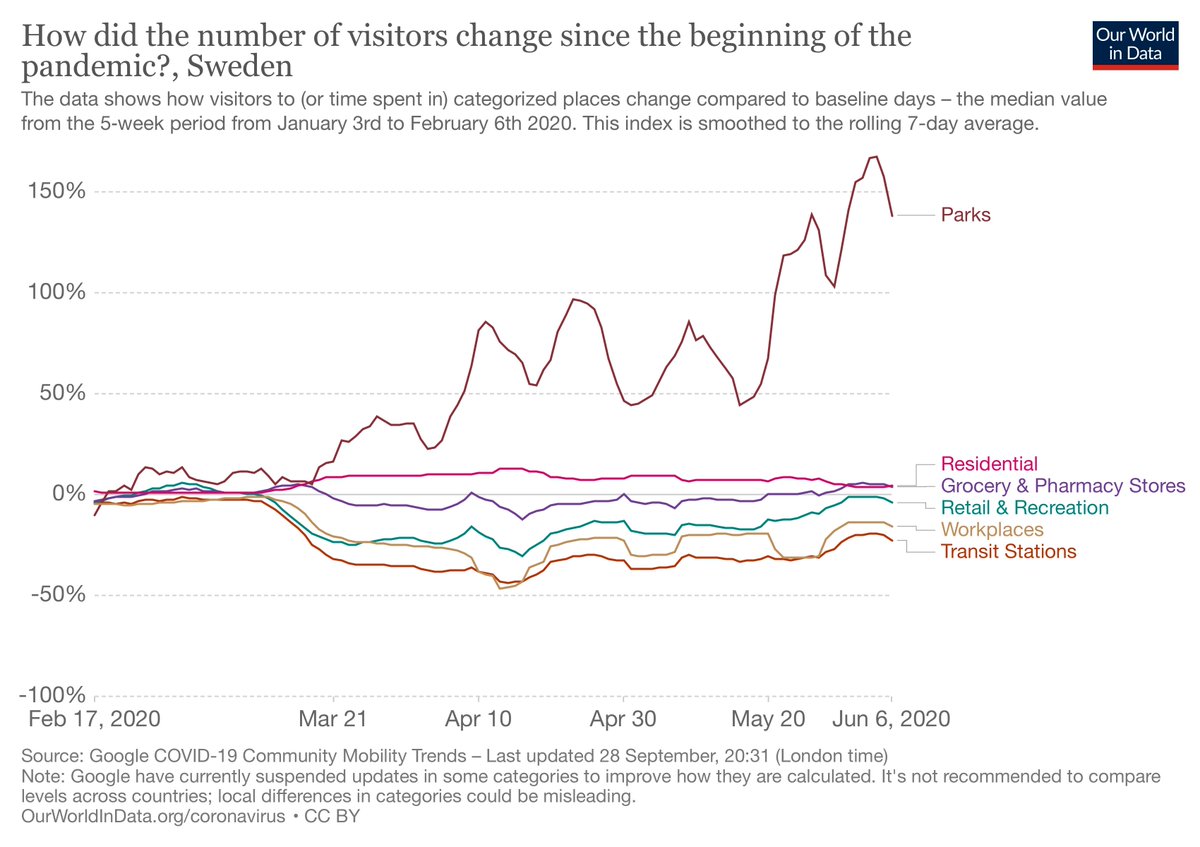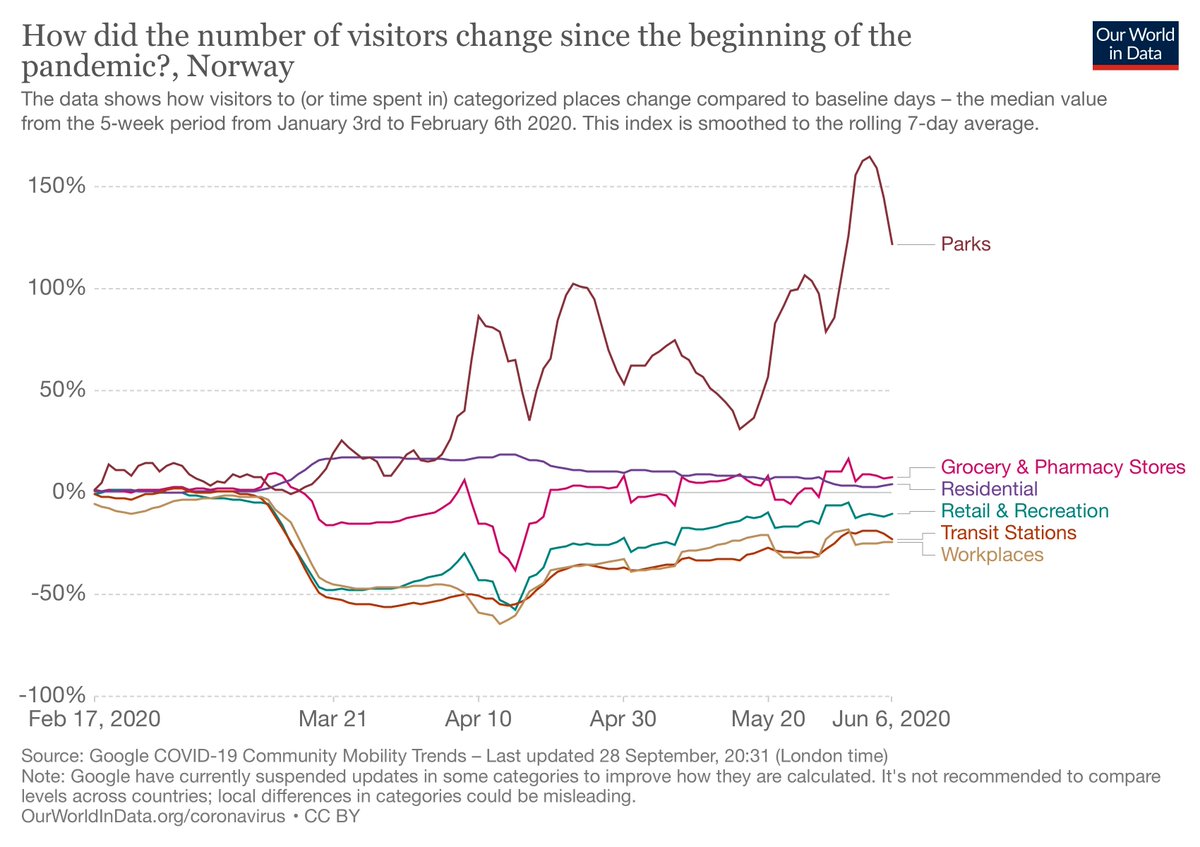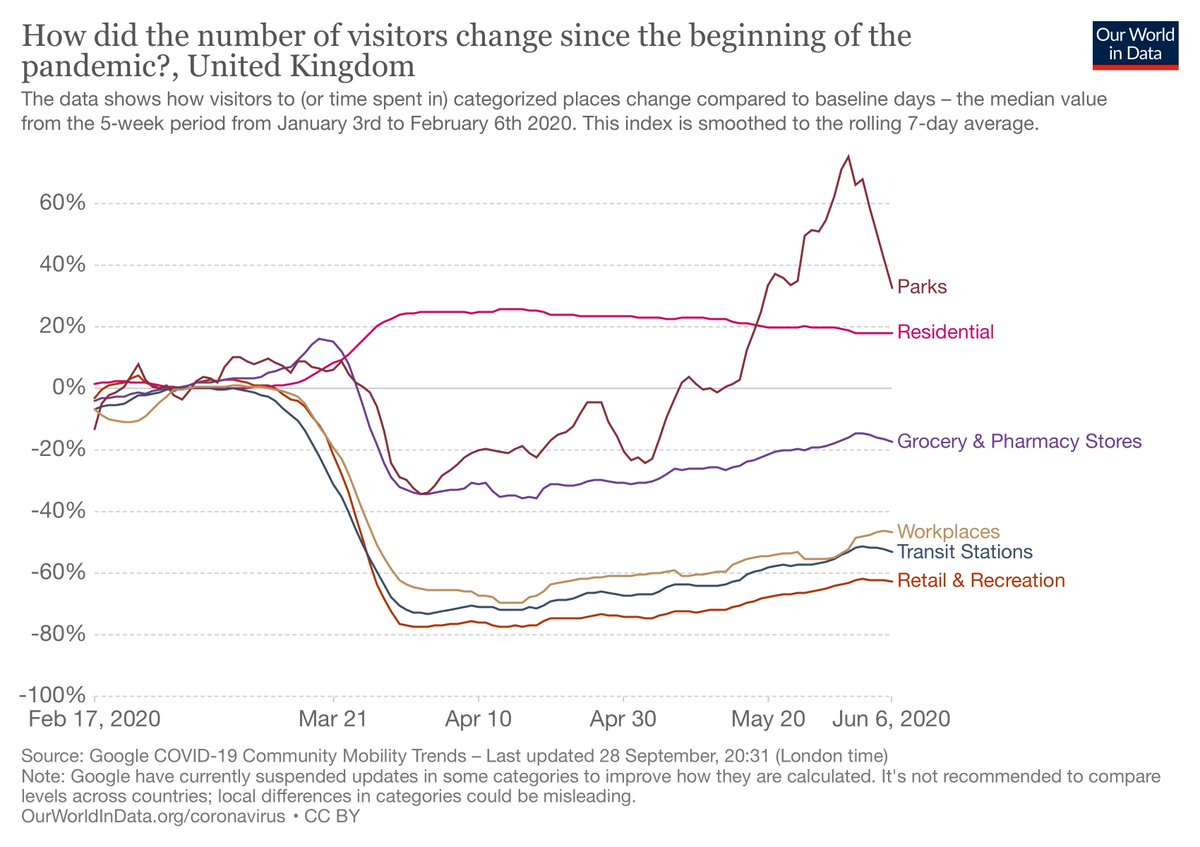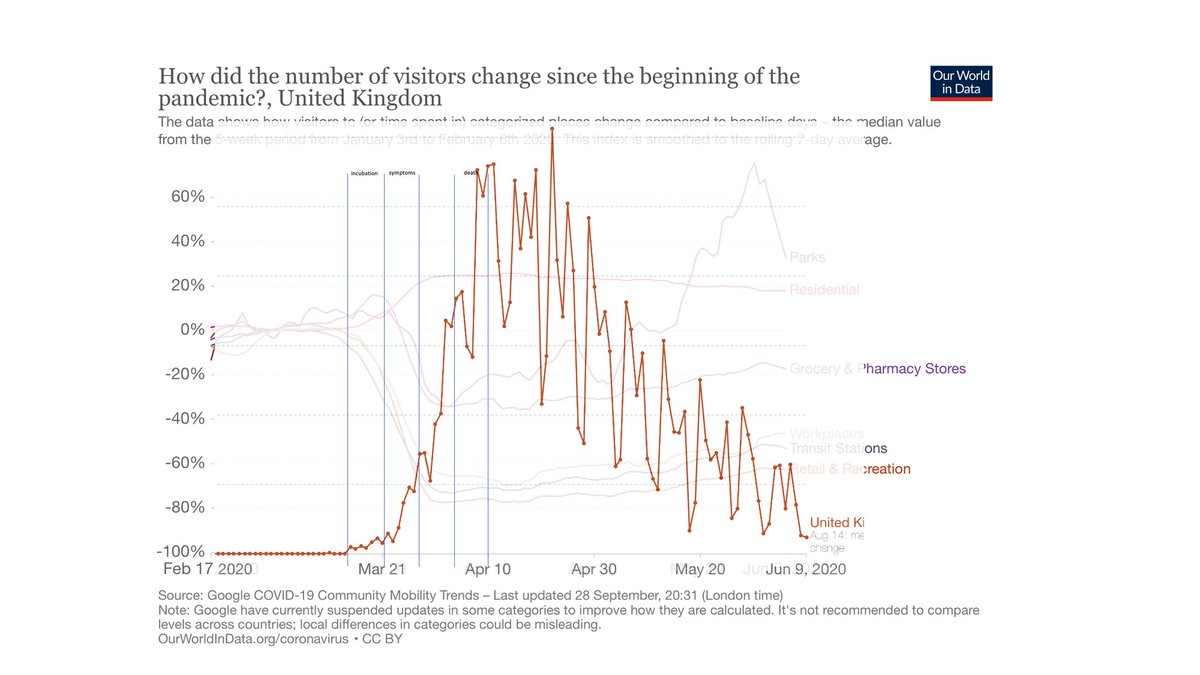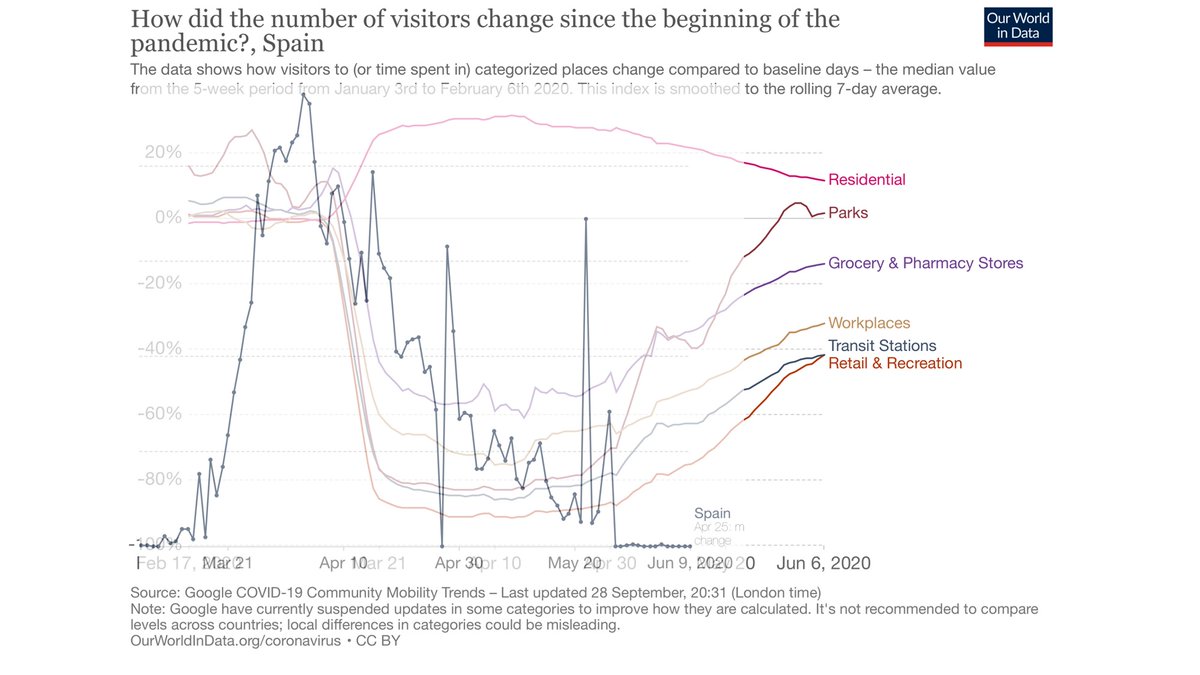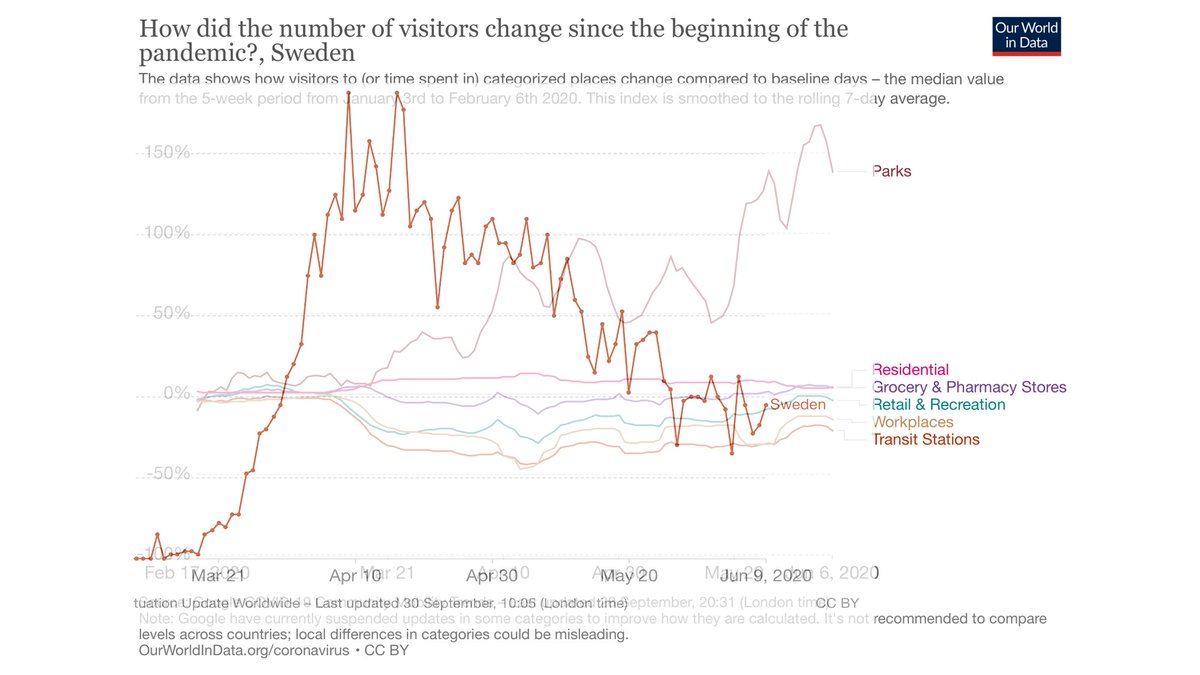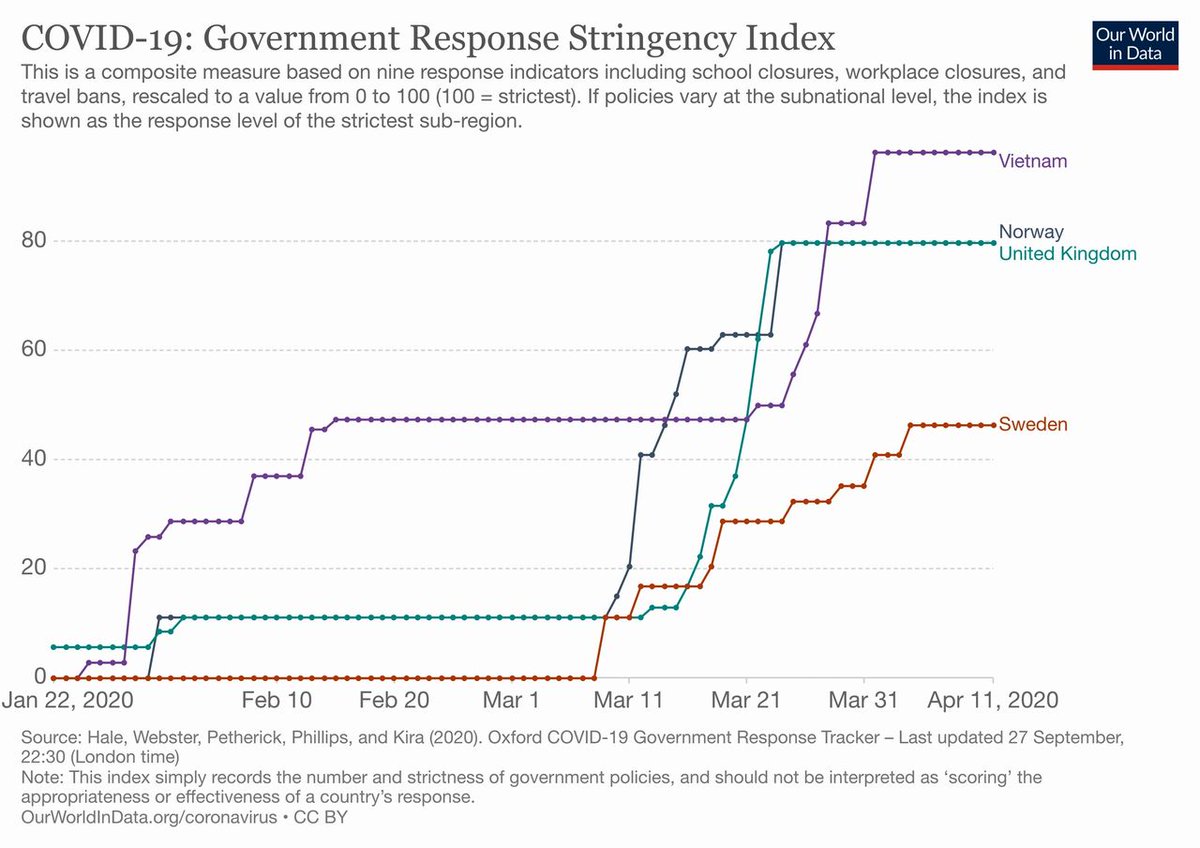#THREAD TALK:
"Everything you ever wanted to know about Lockdowns"
by @DrDomPimenta for @MSiUK_
Part 1: What is a lockdown and do they work?
Full article: https://modernsocietyinitiative.org/latest-research/f/rapid-response-part-1-what-is-a-lockdown-and-does-it-work
Thread">https://modernsocietyinitiative.org/latest-re... begins https://abs.twimg.com/emoji/v2/... draggable="false" alt="👇" title="Rückhand Zeigefinger nach unten" aria-label="Emoji: Rückhand Zeigefinger nach unten"> /1
https://abs.twimg.com/emoji/v2/... draggable="false" alt="👇" title="Rückhand Zeigefinger nach unten" aria-label="Emoji: Rückhand Zeigefinger nach unten"> /1
"Everything you ever wanted to know about Lockdowns"
by @DrDomPimenta for @MSiUK_
Part 1: What is a lockdown and do they work?
Full article: https://modernsocietyinitiative.org/latest-research/f/rapid-response-part-1-what-is-a-lockdown-and-does-it-work
Thread">https://modernsocietyinitiative.org/latest-re... begins
What is a & #39;lockdown& #39;?
Technically, a prison term: https://www.dictionary.com/browse/lockdown
For">https://www.dictionary.com/browse/lo... COVID, there is no agreed definition, but for the purposes of this article let& #39;s use this:
"Any government intervention, to restrict the physical movement of a group of people." /2
Technically, a prison term: https://www.dictionary.com/browse/lockdown
For">https://www.dictionary.com/browse/lo... COVID, there is no agreed definition, but for the purposes of this article let& #39;s use this:
"Any government intervention, to restrict the physical movement of a group of people." /2
So, do & #39;lockdowns& #39; work?
Firstly, what IS a virus?
Viruses are essentially bundles of genetic material encased in protein, that only exist to gain entry to a host organisms& #39; cells and use the micro-machinery it finds there to make MORE virus.
https://microbiologysociety.org/why-microbiology-matters/what-is-microbiology/viruses.html">https://microbiologysociety.org/why-micro... /3
Firstly, what IS a virus?
Viruses are essentially bundles of genetic material encased in protein, that only exist to gain entry to a host organisms& #39; cells and use the micro-machinery it finds there to make MORE virus.
https://microbiologysociety.org/why-microbiology-matters/what-is-microbiology/viruses.html">https://microbiologysociety.org/why-micro... /3
Without a host, most viruses cannot stay alive in the world for long; for COVID specifically we believe up to 9 days on a surface... https://www.journalofhospitalinfection.com/article/S0195-6701(20)30046-3/fulltext
...although">https://www.journalofhospitalinfection.com/article/S... under real-life conditions this is likely to be much shorter:
https://www.thelancet.com/pdfs/journals/laninf/PIIS1473-3099(20)30561-2.pdf">https://www.thelancet.com/pdfs/jour... /4
...although">https://www.journalofhospitalinfection.com/article/S... under real-life conditions this is likely to be much shorter:
https://www.thelancet.com/pdfs/journals/laninf/PIIS1473-3099(20)30561-2.pdf">https://www.thelancet.com/pdfs/jour... /4
Once exposed, the virus runs a similar course in most people, making more virus until the hosts& #39; immune system fights it off.
Most people will take 2-3 weeks before they stop transmitting COVID...
https://wwwnc.cdc.gov/eid/article/26/10/20-1620_article
Although">https://wwwnc.cdc.gov/eid/artic... it is very variable between individuals. /5
Most people will take 2-3 weeks before they stop transmitting COVID...
https://wwwnc.cdc.gov/eid/article/26/10/20-1620_article
Although">https://wwwnc.cdc.gov/eid/artic... it is very variable between individuals. /5
In the severest subset of patients in which it is fatal (WHO consensus between 0.5-1%): https://www.who.int/news-room/commentaries/detail/estimating-mortality-from-covid-19
...the">https://www.who.int/news-room... time from symptoms to death is an average 18.5 days.
So exposure to symptoms: 5-7days
Symptoms to death: ~ 18.5 days
Total: ~4 weeks.
Write this down.
/6
...the">https://www.who.int/news-room... time from symptoms to death is an average 18.5 days.
So exposure to symptoms: 5-7days
Symptoms to death: ~ 18.5 days
Total: ~4 weeks.
Write this down.
/6
So in summary then, viruses have
a
limited
amount
of
time
to
jump to another person (or animal),
or perish where they are. /7
a
limited
amount
of
time
to
jump to another person (or animal),
or perish where they are. /7
Quick recap:
- viruses only exist to make more virus
- they do this by jumping host to host
- they only have a limited time to do this
- no jump, no virus.
Quick break then.
- viruses only exist to make more virus
- they do this by jumping host to host
- they only have a limited time to do this
- no jump, no virus.
Quick break then.
Welcome back.
Taken to the furthest extreme, if we could isolate every single person from every other person simultaneously for three weeks, practically all of the virus would die without a further host to replicate in. /9
Taken to the furthest extreme, if we could isolate every single person from every other person simultaneously for three weeks, practically all of the virus would die without a further host to replicate in. /9
Obviously that isn& #39;t possible, but any measure that reduces transmission will reduce the no. of hosts and therefore the amount of virus overall.
If everyone washed hands & kept 3m distance from anyone 100% of the time, the virus would find it impossible to jump, and disappear.
If everyone washed hands & kept 3m distance from anyone 100% of the time, the virus would find it impossible to jump, and disappear.
So lockdown measures are a gradation of interventions to reduce interactions, from the genteel all the way up to enforced stay at home orders.
Here is the world of & #39;lockdown& #39; measures TODAY, of varying severity (dark blue being most stringent): SOURCE: http://ourworldindata.org"> http://ourworldindata.org
Here is the world of & #39;lockdown& #39; measures TODAY, of varying severity (dark blue being most stringent): SOURCE: http://ourworldindata.org"> http://ourworldindata.org
So the answer is yes,
separating |
people |
from |
each other |
reduces the spread of an infectious disease,
and in reality is the only way to control the spread at all.
separating |
people |
from |
each other |
reduces the spread of an infectious disease,
and in reality is the only way to control the spread at all.
So, how & #39;hard& #39; a lockdown is needed?
That is the much more difficult question. There is the actual measure mandated by government, the letter of the law, and how people& #39;s behaviour actually changes, which can be less or even more severe than the guideline.
That is the much more difficult question. There is the actual measure mandated by government, the letter of the law, and how people& #39;s behaviour actually changes, which can be less or even more severe than the guideline.
For example, here is Sweden and Norway:
Sweden advised citizens to reduce travel, work from home and shield the elderly, banning mass gatherings early in March. Early, but soft.
Norway on the other hand took hard and fast action, closing schools, public places, and shops:
Sweden advised citizens to reduce travel, work from home and shield the elderly, banning mass gatherings early in March. Early, but soft.
Norway on the other hand took hard and fast action, closing schools, public places, and shops:
But what did people actually DO?
We can look at mobile phone data to see what people were actually doing at the time.
So here& #39;s Sweden:
Initially around 30% reduction in retail and up to 50% working from home.
Norway:
Earlier and deeper (50% reduction) earlier return too
We can look at mobile phone data to see what people were actually doing at the time.
So here& #39;s Sweden:
Initially around 30% reduction in retail and up to 50% working from home.
Norway:
Earlier and deeper (50% reduction) earlier return too
And as a consequence we can see there was nearly no excess death in Norway, but Sweden had a large and sustained peak. /14
There has been debate whether a reduction in COVID deaths from lockdown measures can be demonstrated.
This paper concluded there wasn& #39;t an observable link between measures & mortality, although it did correlate with increased recovery and total cases: https://www.thelancet.com/journals/eclinm/article/PIIS2589-5370(20)30208-X/fulltext">https://www.thelancet.com/journals/...
This paper concluded there wasn& #39;t an observable link between measures & mortality, although it did correlate with increased recovery and total cases: https://www.thelancet.com/journals/eclinm/article/PIIS2589-5370(20)30208-X/fulltext">https://www.thelancet.com/journals/...
But a limitation was the inability to review the announced guidelines, separate from actual behaviour,
ie lockdown measures were made law on this date, but what did individuals actually DO?
ie lockdown measures were made law on this date, but what did individuals actually DO?
Let& #39;s look at the UK now. Although & #39;hard& #39; lockdown was 24/3, public behaviour started to drastically change from around the 14th. Diving to 80% reduction by around 24th.
Now if you recall, we already saw how the time from exposure to death is roughly 3-4 weeks for #COVID patients (7 week incubation, 18.5 days avg symptoms to death).
So at the height of COVID deaths, around Apr 10th, these were patients EXPOSED 4 weeks prior. /16
So at the height of COVID deaths, around Apr 10th, these were patients EXPOSED 4 weeks prior. /16
So let& #39;s move back the death curve and see how this correlates with mobility data, and lo and behold we see this:
-adjusted for the lag, mobility data and deaths align EXACTLY.
-This makes sense: you cannot die from a virus you don& #39;t catch in the first place.
-adjusted for the lag, mobility data and deaths align EXACTLY.
-This makes sense: you cannot die from a virus you don& #39;t catch in the first place.
This holds true in many other countries.
Here& #39;s Spain and Norway, deaths overlaid the mobility data as before, adjusted for lag:
Here& #39;s Spain and Norway, deaths overlaid the mobility data as before, adjusted for lag:
Sweden too follows the trend, but you can see far less so, trending downwards as mobility decreased, but taking far longer to come down fully, meaning the virus has more time to expose others and deaths are prolonged.
Public behaviour DOES massively influence COVID deaths.
Lockdowns DO work.
Please have a break here to allow that to sink in.
Lockdowns DO work.
Please have a break here to allow that to sink in.
Lastly, WHEN a lockdown comes in makes a great difference.
No. days between 1st confirmed case and PEAK of lockdown measures:
Vietnam 3 days
Norway 27 days
UK 53 days
Sweden 67 days
No. days between 1st confirmed case and PEAK of lockdown measures:
Vietnam 3 days
Norway 27 days
UK 53 days
Sweden 67 days
Think of it as a fire. There are 2 factors that determine the damage:
1) Time - catch it early and you save your kitchen, but late & the house burns
2) The intervention. Garden hose= you put it out eventually, but the house burns down OR 3 fire engines = save the living room.
1) Time - catch it early and you save your kitchen, but late & the house burns
2) The intervention. Garden hose= you put it out eventually, but the house burns down OR 3 fire engines = save the living room.
Mathematical models of the rise and fall of the first wave of the COVID pandemic are determinant on EXACTLY these two factors;
1) the initial growth of the virus and 2) the stringency of the intervention. This is a paper again of Sweden vs Norway:
https://arxiv.org/pdf/2008.02475.pdf">https://arxiv.org/pdf/2008....
1) the initial growth of the virus and 2) the stringency of the intervention. This is a paper again of Sweden vs Norway:
https://arxiv.org/pdf/2008.02475.pdf">https://arxiv.org/pdf/2008....
This study looking at 149 countries concluded that EARLIER measures reduced the overall no. of cases.
This paper also recognised that different interventions add up, and adding some measures may not make a difference if others are already in place. https://www.bmj.com/content/370/bmj.m2743">https://www.bmj.com/content/3...
This paper also recognised that different interventions add up, and adding some measures may not make a difference if others are already in place. https://www.bmj.com/content/370/bmj.m2743">https://www.bmj.com/content/3...
So quick SUMMARY;
1) Viruses have a short lifespan to reach another person
2) Separating people reduces virus levels again
3) The earlier and harder you do this, the less virus overall
4) Less virus = less deaths
So lockdowns do work. But do have an impact. So where is the line?
1) Viruses have a short lifespan to reach another person
2) Separating people reduces virus levels again
3) The earlier and harder you do this, the less virus overall
4) Less virus = less deaths
So lockdowns do work. But do have an impact. So where is the line?
Thank you for coming to my #THREAD TALK for @MSiUK_
Part 2 Coming Tomorrow.
Sneak peak of full article here: https://modernsocietyinitiative.org/latest-research/f/part-2-lockdown-vs-the-economy
Time">https://modernsocietyinitiative.org/latest-re... for a rest.
Part 2 Coming Tomorrow.
Sneak peak of full article here: https://modernsocietyinitiative.org/latest-research/f/part-2-lockdown-vs-the-economy
Time">https://modernsocietyinitiative.org/latest-re... for a rest.

 Read on Twitter
Read on Twitter